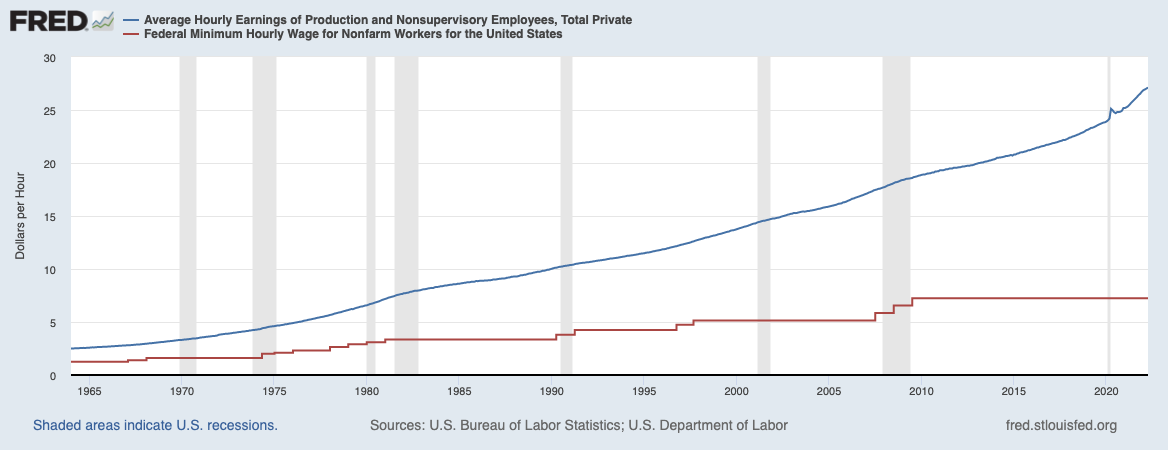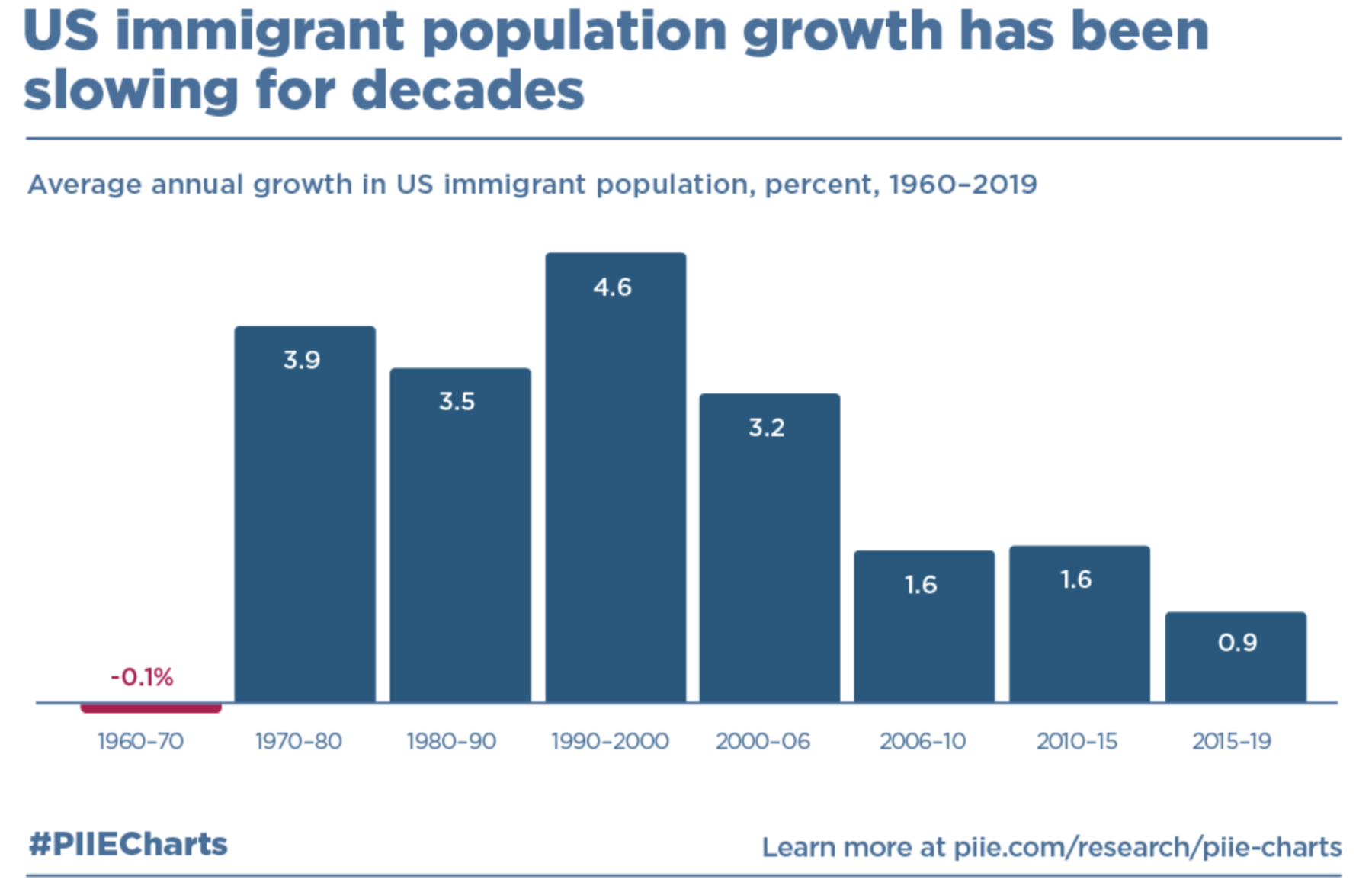Today is NFP day: We learned employment increased by 428,000 in April, and the unemployment rate was unchanged at 3.6%. Job growth was widespread, led by gains in leisure and hospitality, manufacturing, transportation, and warehousing.
There are now two job openings for every unemployed person, the number of participants not in the labor force continues to grow, and the lack of workers is being blamed for everything from supply chain issues to inflation.
I’ve discussed wages and employment incessantly for the past decade, and the current circumstance looks like it can be moderated with a few simple steps. To do so requires decisive action from the White House and Congress (which perhaps explains why it’s unlikely to happen anytime soon in our dysfunctional partisan dystopia).
We can improve the labor market and benefit all parties with two simple steps, but they require action from Congress and the White House:
1. Restore Immigration to 1995 Levels: Immigration in the United States has been slowing for decades. You can see the downturn in immigration on the two charts nearby. Immigration peaked in the 1990s, slowed in the 2000s, dove under President Trump in 2016, and continues at low levels under President Biden in 2021-22.1 Just over the past 5 years, the labor force is short about 3 million immigrant workers missing from the U.S. economy.
If we were to return to the level of immigration that we saw in the 1990s, the labor shortage would be solved. The decreases since 2015 levels alone subtracted ~3,000,000 new workers from the labor market.
Allowing more immigrant workers into the U.S. on either H-1B Visas or other work Visas would help make up the shortfall in labor. That requires action from Congress and the White House.
2. Make the Federal Minimum Wage Adjust Automatically: The current turmoil in the labor markets did not spring out of anywhere – it is the result of a concerted and successful lobbying effort to prevent the minimum wage from rising. Wages in the bottom quartile have lagged every relevant factor for decades: Inflation, corporate profits, productivity, and C-Suite compensation.
In 1964, the minimum wage was 50% of hourly earnings; today the $7.25 minimum wage is only 23% of the $31.85 average hourly wage.
There ramifications of this are far-reaching and deeply negative. While wages have been a deflationary factor since 1964, it creates other issues. (My pet peeve is taxpayers subsidizing the profits of publicly traded companies). The resulting market dislocations persisted until wealthy Tech firms – most notably Amazon – saw an opportunity to take advantage. With the federal minimum wage at $7.25 per hour, they offered $15 and forced everybody else to scramble.
It should come as no surprise that given an opportunity to better than themselves, an entire generation of workers did so, taking full advantage to exit the bottom of the labor pool. Labor markets are experiencing a generational reset: after decades of lagging wages, the a spasmodic readjustment is now better reflecting the dynamics between capital and labor, between employers and employees.
One solution to this would be to remove remove minimum wages from the lobbyists and politicans hands and build in a cost-of living adjustment (COLA) that rose automatically with CPI. It could be capped at some reasonable level (e.g., 5% a year) but would not lag for decades at a time.
We are still dealing with the fallout from this labor market one-two punch.
There are numerous other thorny issues that are much more difficult to fix: Daycare is an issue; disability, early retirement, and people leaving the labor force entirely are all problematic. So too are Covid deaths, lack of health care, and too many others.
Still, it would go a long way towards lowering inflation, reducing supply chain problems, and finding a sufficient supply of willing workers if Congress would address these two issue.
See also:
America needs immigration to grow and thrive (Noah Smith, January 2022)
State of Working America 2021 (EPI, April 27, 2022)
Previously:
America’s Corporate Welfare Queens (November 13, 2013)
The Minimum Wage and McDonald’s Welfare (Dec 17, 2013)
Minimum Wage Solution: $12/hour with COLA (February 12, 2021)
The Great Reset (June 2, 2021)
Elvis (Your Waiter) Has Left the Building (July 9, 2021)
_________
1. We are back to 1960s levels of immigration. If the U.S. keeps immigration at those levels, perhaps we can anticipate 1970s levels of inflation.



